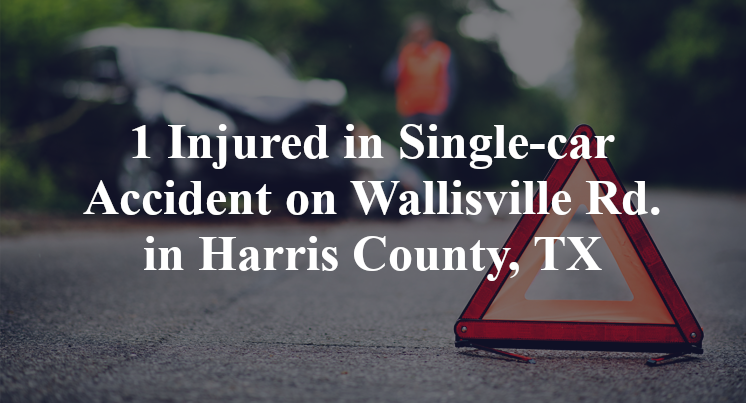1 Injured in Single-car Accident on Wallisville Rd. in Harris County, TX
Harris County, TX — January 10, 2025, one person was injured in a single-car accident just after 12:00 midnight along Wallisville Road.
According to authorities, two people were traveling in a westbound Chevrolet Traverse on Wallisville Road in the vicinity west of the Normandy Street intersection when the accident took place.

Officials indicate that, for as yet unknown reasons, the Traverse failed to safely maintain its lane of travel. It was consequently involved in a single-vehicle collision in which it struck a highway sign. The person who had been behind the wheel of the vehicle allegedly fled the scene.
The passenger—a 32-year-old man—reportedly suffered serious injuries due to the crash. Additional details pertaining to this incident—including the identity of the victim—are not available at this point in time. The investigation is currently ongoing.
Commentary
When a passenger is seriously injured in a single-vehicle crash and the driver flees the scene—as reportedly occurred along Wallisville Road in Harris County—it raises immediate concerns, not only about accountability but about how and why the crash took place in the first place. In my experience, these types of incidents are rarely as simple as they appear. To uncover the full story, there are three critical questions that must always be asked.
First, did authorities conduct a complete investigation of the crash scene and vehicle? When a driver flees, the opportunity to document key evidence—such as seating positions, vehicle control settings, and possible signs of impairment—is incredibly short-lived. Investigators need to recover any available surveillance footage, canvass for witnesses, and document tire marks, impact angles, and debris patterns. In some cases, identifying the driver comes down to evidence inside the vehicle—fingerprints, personal items, or forensic clues that can establish who was behind the wheel at the moment of impact.
Second, has anyone considered whether a mechanical defect could have contributed to the crash? While the focus naturally turns to the driver’s actions, it’s important not to overlook the possibility that the Chevrolet Traverse may have experienced a steering, brake, or stability control failure that led to the lane departure. Likewise, if the vehicle’s safety features didn’t perform properly—such as airbags failing to deploy or seat belts not restraining the passenger—those failures could have worsened the extent of the injuries. Identifying these issues requires a detailed forensic inspection, and that inspection must take place before the vehicle is altered or released.
Finally, has all electronic data been preserved and analyzed? The Traverse is likely equipped with an event data recorder that logs speed, braking, steering inputs, and other critical details in the seconds before a crash. This information can help confirm the vehicle’s movement, the driver's response, and whether the car behaved as expected. Investigators should also review GPS logs, dashcam footage (if available), and cell phone data that might clarify who was in the vehicle, what they were doing, and how the crash unfolded.
Answering these three questions is critical to making sure that no stone is left unturned in understanding the causes of a crash like this. Serious wrecks deserve serious investigation, not assumptions. Getting clear answers to these questions is crucial for those seeking to understand what happened and why—and it's the least that can be done to help those affected find the clarity and closure they deserve.

*We appreciate your feedback and welcome anyone to comment on our blog entries, however all visitor blog comments must be approved by the site moderator prior to showing live on the site. By submitting a blog comment you acknowledge that your post may appear live on the site for any visitors to see, pending moderator approval. The operators of this site are not responsible for the accuracy or content of the comments made by site visitors. By submitting a comment, blog post, or email to this site you acknowledge that you may receive a response with regard to your questions or concerns. If you contact Grossman Law Offices using this online form, your message will not create an attorney-client relationship and will not necessarily be treated as privileged or confidential! You should not send sensitive or confidential information via the Internet. Since the Internet is not necessarily a secure environment, it is not possible to ensure that your message sent via the Internet might be kept secure and confidential. When you fill out a contact or comment form, send us an email directly, initiate a chat session or call us, you acknowledge we may use your contact information to communicate with you in the future for marketing purposes, but such marketing will always be done in an ethical way.